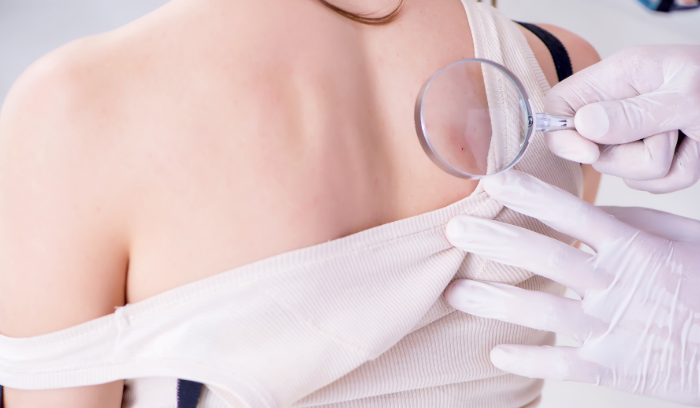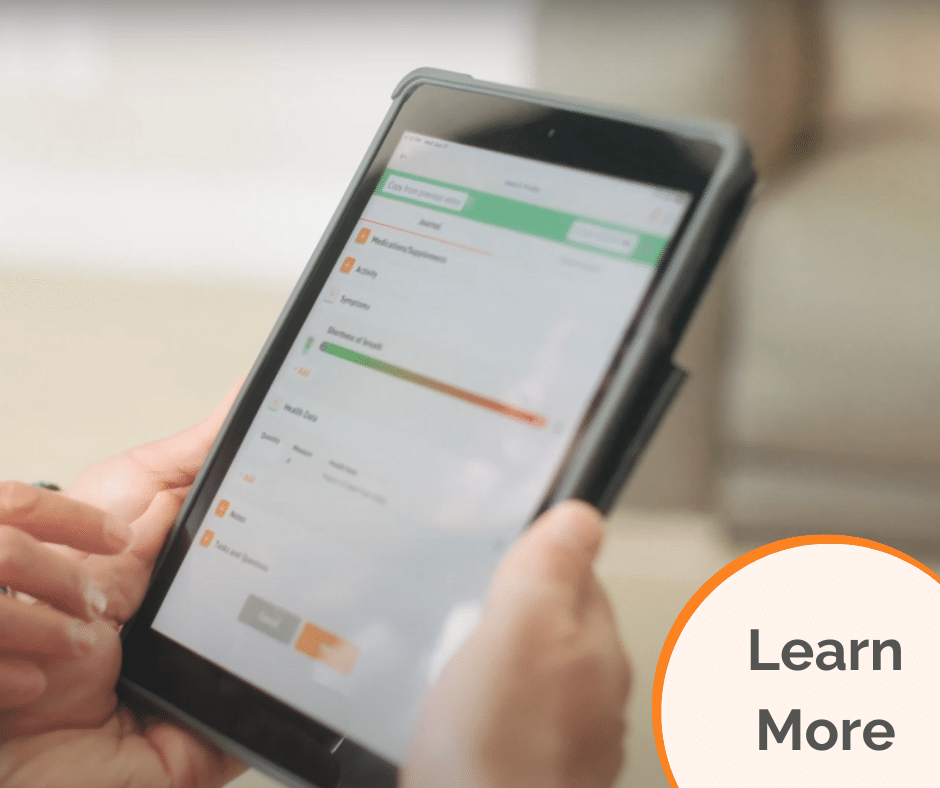How to Get Into the Healthy Habit of Self-Monitoring for Skin Cancer
Skin Cancer and Self-Monitoring
Skin cancer accounts for one-third of all cancer cases, making it the most common type of cancer among Canadians (Government of Canada). Self-monitoring is crucial for the early detection of skin cancer in order to treat and cure it. Everyone should self-monitor, but it is particularly important for it to be done by individuals who have certain risk factors that increase their chance of getting skin cancer. For example, some of these factors include skin tone, family history, or having light-colored eyes (Canadian Skin Cancer Society).
Additionally, for individuals who have had more than five sunburns, their risk of developing melanoma doubles (TheBigSee). Covered in this blog post is everything you need to know about self-monitoring and how you can use routines in your self-monitoring.
What is Self-Monitoring?
Whether you are newly diagnosed with skin cancer, already living with skin cancer, or are concerned about a new growth, it’s cardinal to self-monitor. Self-monitoring is checking your skin from head-to-toe for any new, unusual, or changing growths, spots, or moles; this should be done monthly (Skin Cancer Foundation). When done frequently, self-monitoring can allow you to efficiently notice any changes in your skin and detect skin cancer early. Doing these self-monitoring routines also encourages you to be an engaged patient in your health care journey by actively allowing you to take control of your health. To prepare for self-examination, make sure you have a full-length mirror and a hand-held mirror (Save Your Skin Foundation).
Here are the steps for a self-examination recommended by the Save Your Skin Foundation:
- Using the full-length mirror, start by examining your face, nose, lips, ears, eyes, and mouth.
- Check your upper body. Examine your abdomen, chest, shoulders, and neck. For women, ensure you check under the breasts.
- Now grab the hand-held mirror and hold it up so you can see the back of your head, back of your neck, behind the ears, and your upper back in the full-length mirror. Use a comb or a hairdryer to section your hair so you can examine your scalp. If you find this difficult, ask a family member or friend to help.
- Raise both arms and check all sides, including the armpit. Examine both hands, getting under the fingernails, the palm and back of the hand, and in between each finger.
- Grabbing the hand-held mirror again, examine the lower half of your body. This includes your lower back, buttocks, calves, and the back of the thighs.
- Lastly, check the tops of your feet, soles, toes, toenails, and in between the toes.
Self-monitoring is key to the early detection of skin cancer. When skin cancer is caught early enough, it can be treated early, and the odds of the case being curable are 99% (Skin Cancer Foundation). Even melanoma has a high probability of getting cured if it’s caught early enough (Canadian Skin Cancer Foundation). Skin cancer is visible on the surface of the skin, meaning it is easily detectable with the use of routine self-monitoring (Skin Cancer Foundation).
The Save Your Skin Foundation has useful images of what to look for when you’re self-monitoring that are found here.
Frequency
With skin cancer diagnosed in 1 in 6 Canadians, it’s increasingly essential to do self-monitoring on an ongoing monthly basis (Canadian Skin Cancer Foundation). Getting into a routine can be a helpful reminder to examine your skin and can help with early detection (Canadian Skin Cancer Society). Certain factors increase the odds of an individual getting skin cancer, such as fair skin, having over 50 moles, the use of a tanning bed, or family history, to name a few (Canadian Skin Cancer Society). If you are more at risk of developing skin cancer, it can be beneficial to check your skin more often to ensure there are no new, changing, or unusual growths, spots, bumps, etc.
How to Remind Yourself to Do Self-Examinations
Ideally, monthly self-examinations will become a habit, so it won’t be necessary to set reminders. However, for individuals who are just starting to monitor their skin this won’t already be a habit, and they may have trouble remembering to do it each month; this is where a reminder can help increase their odds of doing their self-monitoring. You can remind yourself of tasks by:
1. Using an alarm set for a specific day every month
2. Setting the self-examination as a calendar event
3. Writing it down in a to-do list
4. Place visual triggers that help remind you to do your skin monitoring.
Additionally, it can be beneficial to reach out to a friend or family member who will do self-checks the same day as you every month, so you can help remind each other.

Where to Keep the Information Obtained From Self-Monitoring
With self-monitoring, you should be documenting what you see. This can be in the form of writing down changes in the skin, taking a picture of a new growth, or taking a picture of current freckles and moles so you can compare them in the following months self-examination. Documenting your self-monitoring can help you better understand the symptoms of skin cancer, and it allows you to be an engaged patient in this health journey you’re on (Thomas G. Gutheil). It’s easy to write all this information down in a virtual health binder that allows you to attach images you take during the self-check. Keeping all your information in one place can help you access it at any time and any place, so you can recall your data whenever. This can be especially useful when you go to visit your doctor or dermatologist and want to review your self-monitoring sessions.
What to Do if You’re Concerned About the Results From Self-Monitoring
If you notice anything new, changing, or unique while conducting your self-monitoring, make sure to get it checked by your doctor or dermatologist right away, as it could be skin cancer. Even if you are uncertain about or there is something that concerns you in any way, contact a health care professional. Remember, everything in this blog post is not meant to replace a doctor or healthcare provider’s medical advice. Ensure you follow what your doctor tells you; this blog is meant to raise awareness and provide tips on how to get into the habit of self-monitoring for skin cancer.
Regardless of what point you are at in your health care journey, remember that self-monitoring is crucial in detecting any abnormalities as early as possible. Whether you want to prevent skin cancer, are newly diagnosed with skin cancer, or are living with skin cancer, early detection is essential in treatment and curability. The main takeaway is that self-monitoring routines can empower you to take control of your health care journey by engaging you in the prevention of skin cancer.
To learn how you can start using routines to track your skin-monitoring, click here.

Sources
Canadian Skin Cancer Foundation/Early Detection: https://www.canadianskincancerfoundation.com/early-detection/skin-check/
Canadian Skin Cancer Foundation/Skin Cancer: https://www.canadianskincancerfoundation.com/skin-cancer/
Government of Canada: https://www.canada.ca/en/public-health/services/sun-safety/skin-cancer.html
Save Your Skin Foundation: https://saveyourskin.ca/downloadable-resources/
Skin Cancer Foundation/Early Detection: https://www.skincancer.org/early-detection/#:~:text=That's%20why%20skin%20exams%2C%20both,become%20dangerous%2C%20disfiguring%20or%20deadly
Skin Cancer Foundation/Self-Exam: https://www.skincancer.org/early-detection/self-exams/
The Big See: https://thebigsee.org/
Thomas G. Gutheil: https://www.ncbi.nlm.nih.gov/pmc/articles/PMC3010959/
Share this
You May Also Like
These Related Stories
%20(5)-1.png?width=940&height=788&name=Updated%20Blog%20Images%20(Blog%20listing)%20(5)-1.png)
Using Zamplo for Routine Self-Monitoring of Skin Cancer
-1.png?width=940&height=788&name=Updated%20Blog%20Images%20(1)-1.png)
Guide to Creating Routines and Healthy Habits
%20(2)-1.png?width=940&height=788&name=Updated%20Blog%20Images%20(Blog%20listing)%20(2)-1.png)
.png?width=500&height=200&name=Zamplo%20Logo%20(1).png)


%20(2).png?width=940&name=Blogs%20Product%20Image%20(940%20%C3%97%20200%20px)%20(2).png)

No Comments Yet
Let us know what you think